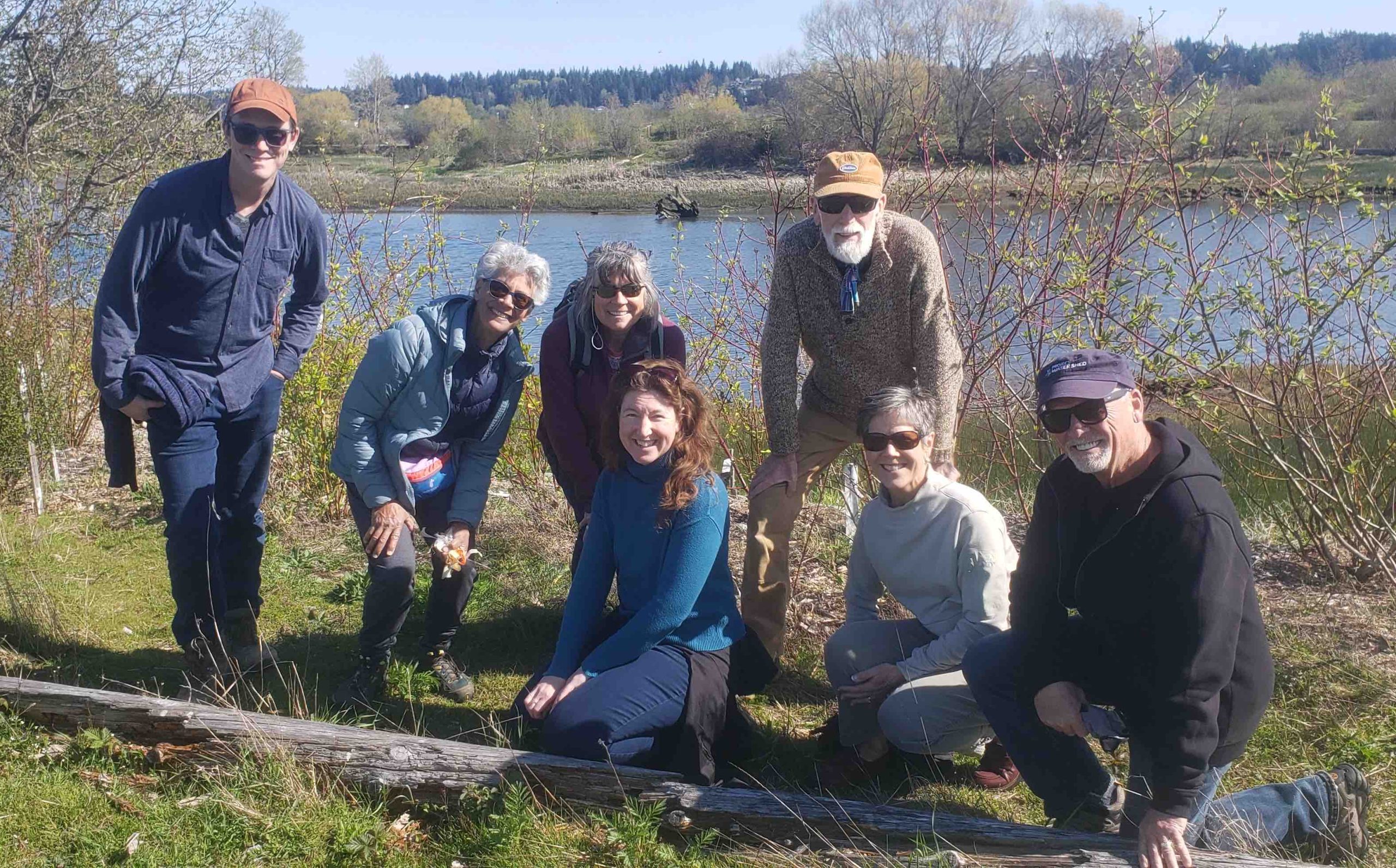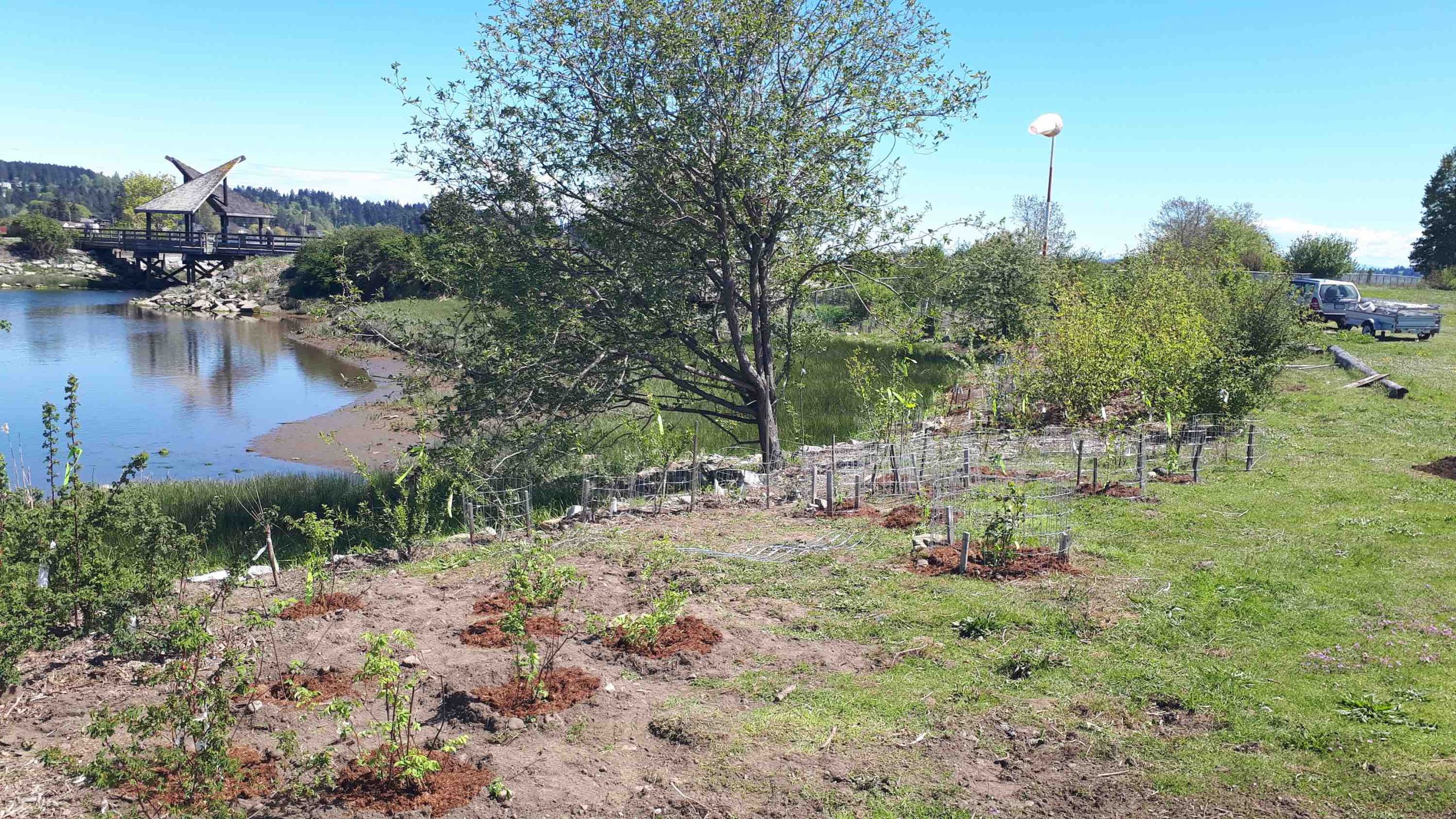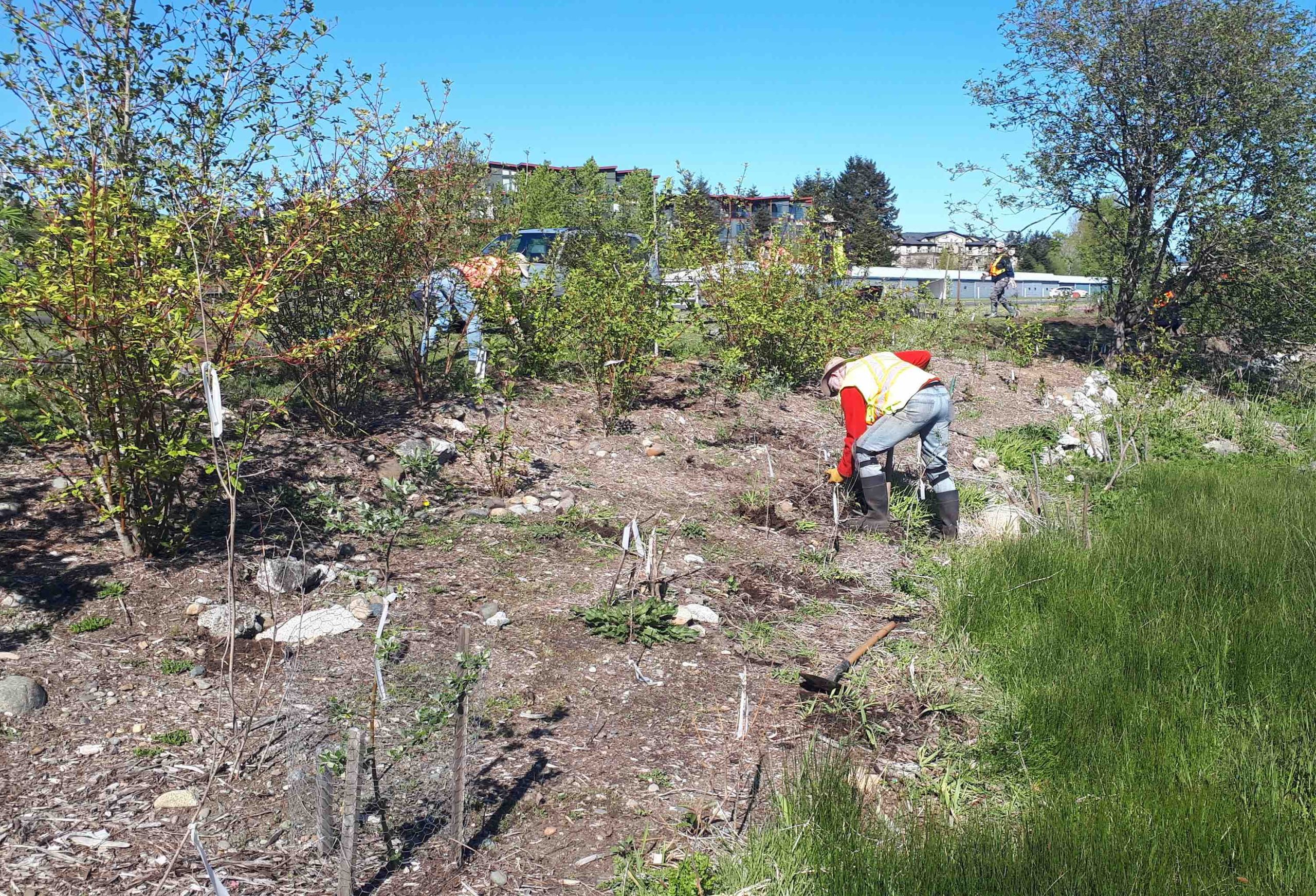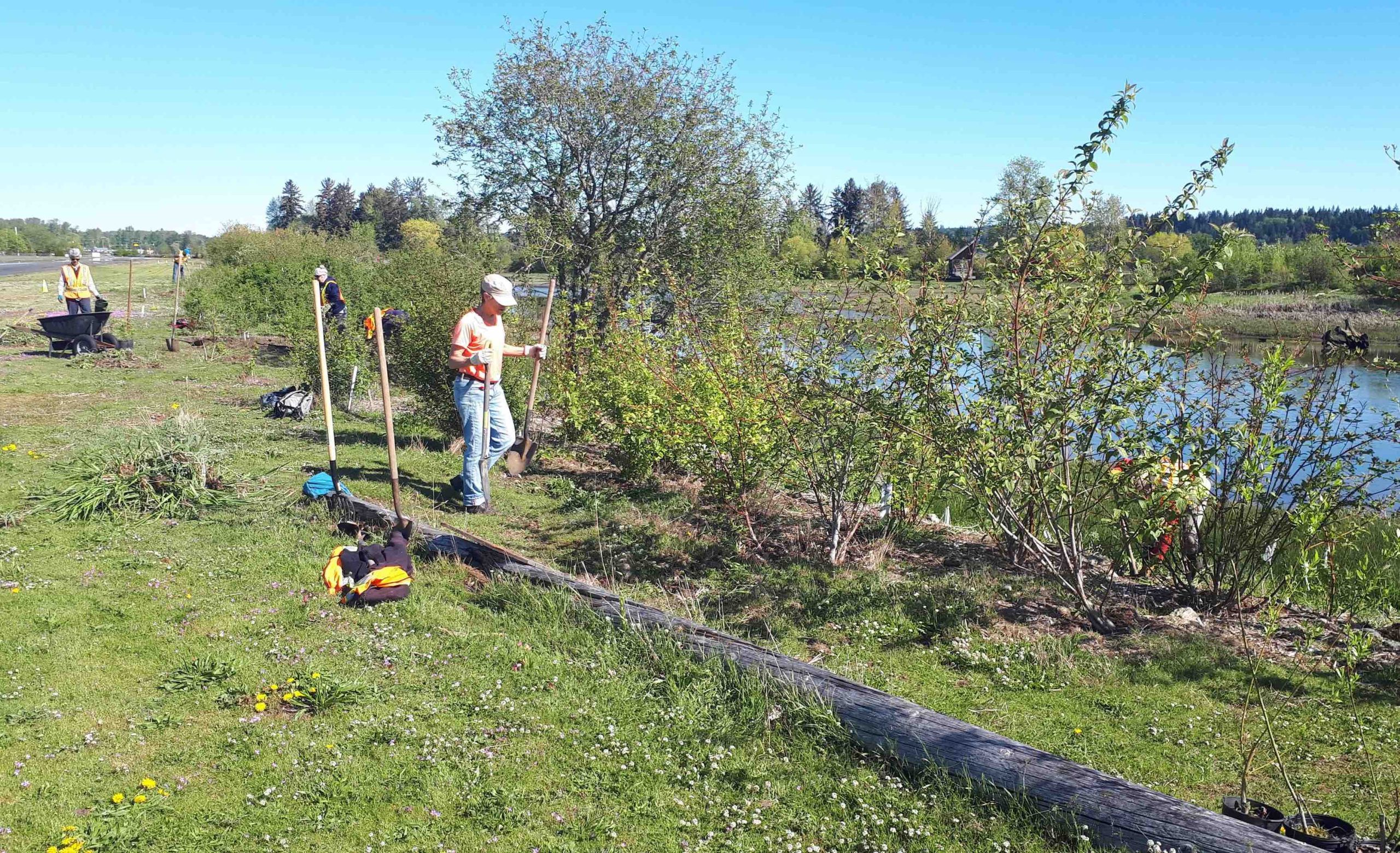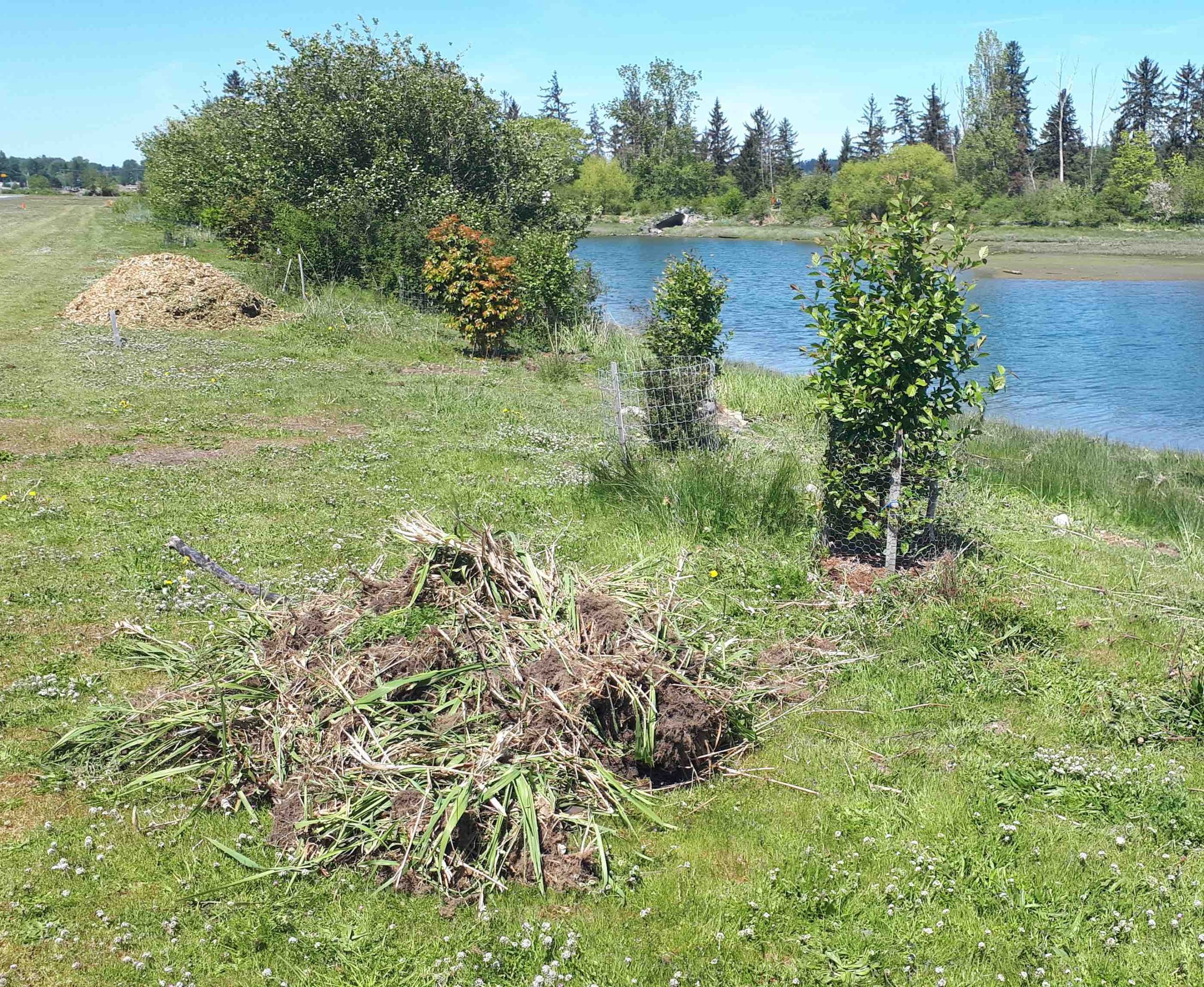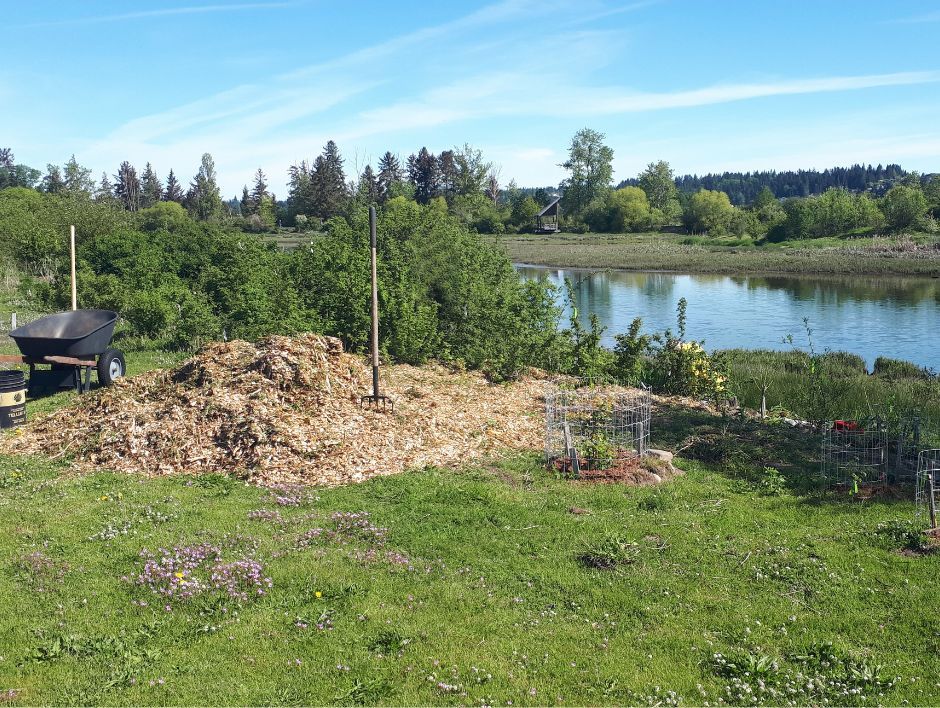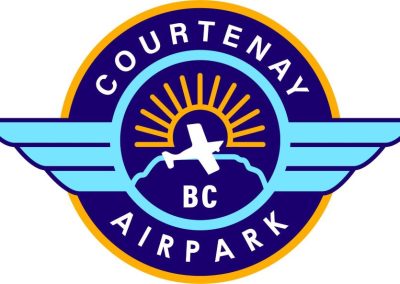K’ómoks Estuary Lagoon Spring 2024 Update
Awesome Airpark Volunteers ~ Dan Bowen
Freshly planted and mulched ~ Bob Bowen
Airpark crew in action ~ Bob Bowen
Airpark crew in action ~ Bob Bowen
Removed invasives! ~ Bob Bowen
Mulch delivery!
A huge thank you to Grow Tree Care for donating and delivering mulch to our restoration projects – both at the Airpark and at Kus-kus-sum. We appreciate the help!
Project Watershed has been working to restore habitat in and around the lagoon at the Courtenay Airpark since 2013. Our work began with the installation of the culvert that connects the river to the lagoon. A few years after the culvert work was finished, we started maintaining the upland habitat that surrounded the Airpark side of the lagoon as many invasive species had taken hold there. Now, from April to September, volunteers meet every Thursday morning from 9:30 – noon to maintain native plants and remove invasive plants from this area. Over the years 4400 m2 of upland habitat have been reclaimed.
If you are interested in joining this team – sign up here to receive important safety information and schedule updates.
Planting and maintenance:
New species planted so far this year include Red Osier Dogwood, Gum Weed, Dune Grass, and Distichlis Spicata (Seashore Saltgrass). Thanks to the Courtenay Airpark Association for providing the funds to purchase these plants!
To give our young plants the best chance of survival we need to make sure they don’t get too dry! Mulching helps with moisture retention and weed control. All the new plants were mulched heavily. Over the year volunteers will also add mulch to older plants as needed. When plants are on a slope, volunteers will often build up a berm on the low side of the plant to help retain water that runs down the slope.
Smaller more vulnerable plants are being given wire mesh enclosures to protect them from grazing deer and rabbits. When they outgrow these enclosures, the wire will be removed. At this time any weeds that have grown up are removed, and mulch is replenished. Thanks to Grow Tree Care arborists for donating and delivering mulch for us!
Later in the season, when things are really dry, we also have to irrigate the site. Don Mitchell is helping us set up an irrigation system so that watering efforts are efficient and not too labour intensive.
Invasive removal:
Reed Canary Grass – grows along the high tide line and is very labour intensive to remove. Thanks to volunteer Tim with his mattock for working diligently to remove piles and piles of this invasive grass!
Himalayan Blackberry – also quite labour intensive – and sometimes painful! – to remove.
Tansy – it looks like a pretty flower, but it is invasive and should be removed.
Wildlife observations:
The volunteer crew has a lot of fun working together. They also get to observe wildlife in action: during the month of May they saw multiple nesting birds, including a killdeer and a pair of sandpipers. They also saw some ravens giving an eagle a hard time – probably protecting nests of their own!
Information for this post provided by Caila Holbrook and Bob Bowen.
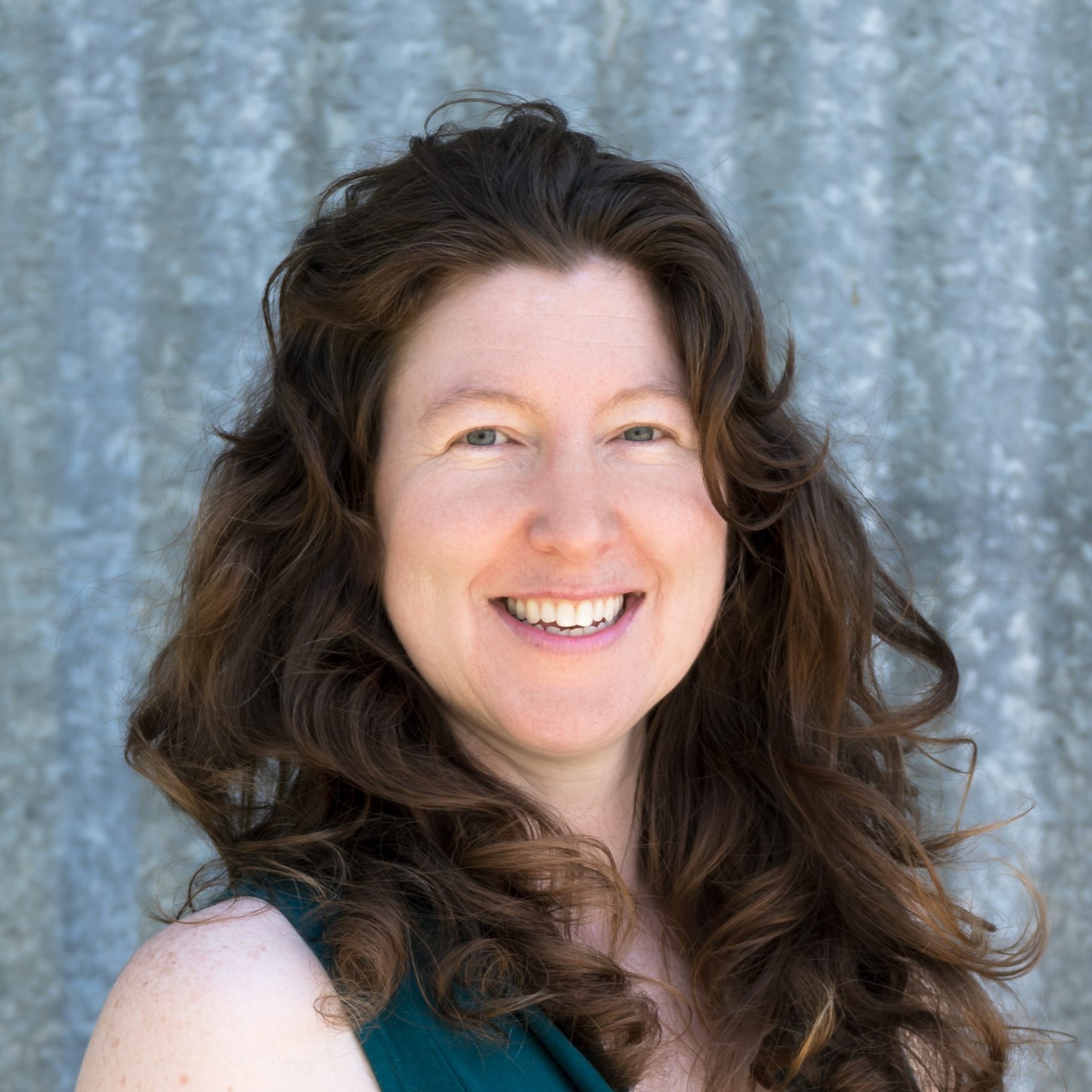
Caila Holbrook
Manager of Fundraising and Outreach
2024 Project Sponsors
Related Posts
Mallard Creek Restoration Update for 2024
Restoration work in Mallard Creek will continue this year, including invasive removal, restoring connectivity, and trial planting of a new riparian species. Volunteer events starting in September 2024.
Volunteer at Kus-kus-sum Chamber of Commerce Event
We are showing Kus-kus-sum off to businesses in the Valley through a Chamber Business to Business event. We are looking for a few volunteers to assist with this event.
Coastal Plant Monitoring
Get involved with our new vegetation community science monitoring program!
Spring Field Trips
Throughout May and June Project Watershed will be taking elementary school classes out on field trips to learn about estuary and coastal ecology and to assist with planting and plant maintenance.
Working Together to Identify Forage Fish Spawning Beaches
This year marks the 5th year of a partnership between Comox Valley Project Watershed Society and North Island College on a long-term study to examine intertidal spawning habitats of forage fish in the northern Salish Sea.
Glen Urquhart Update – Spring 2024
Latest news from Glen Urquhart restoration progress for spring 2024.


